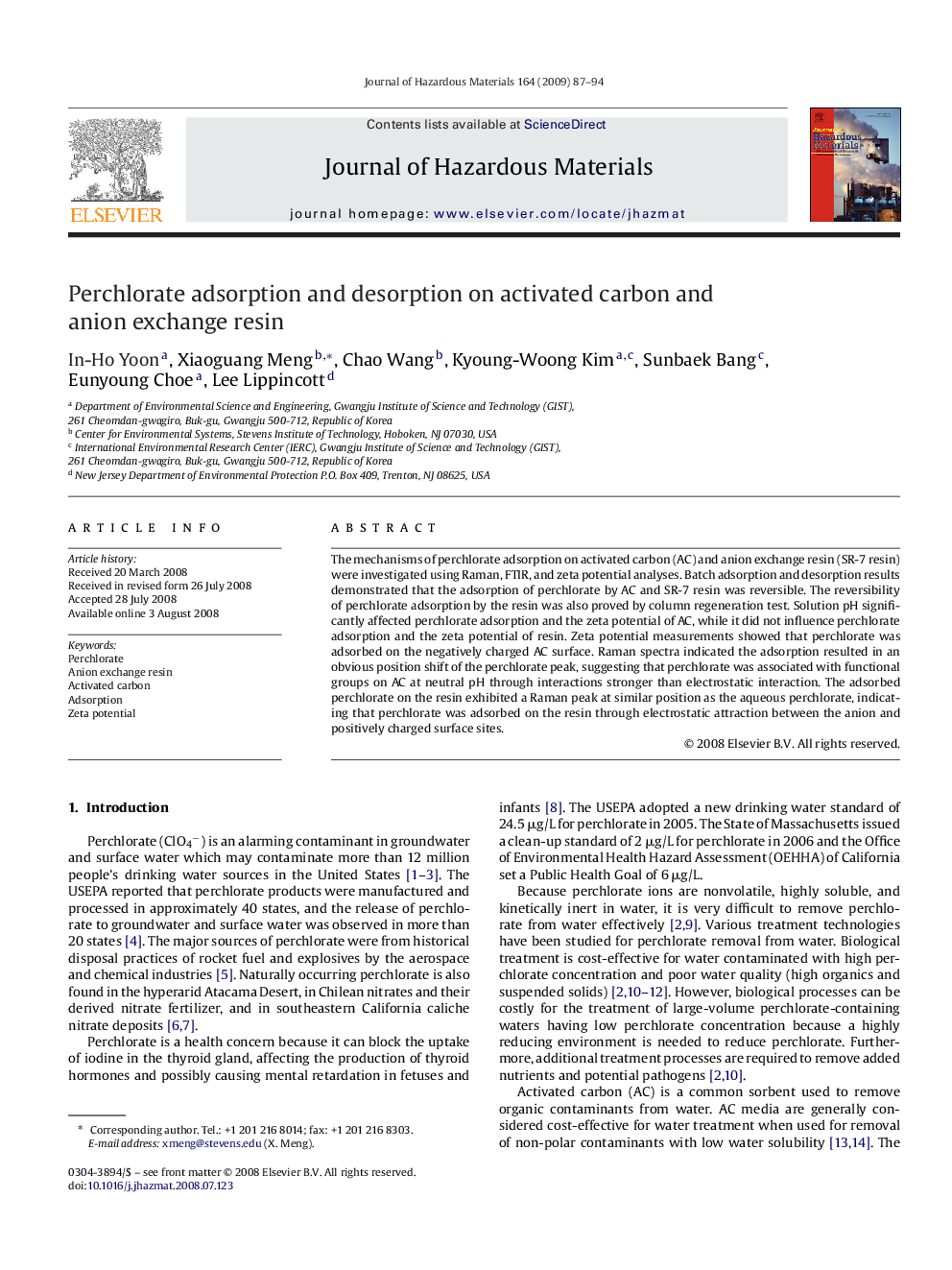| Article ID | Journal | Published Year | Pages | File Type |
|---|---|---|---|---|
| 582196 | Journal of Hazardous Materials | 2009 | 8 Pages |
Abstract
The mechanisms of perchlorate adsorption on activated carbon (AC) and anion exchange resin (SR-7 resin) were investigated using Raman, FTIR, and zeta potential analyses. Batch adsorption and desorption results demonstrated that the adsorption of perchlorate by AC and SR-7 resin was reversible. The reversibility of perchlorate adsorption by the resin was also proved by column regeneration test. Solution pH significantly affected perchlorate adsorption and the zeta potential of AC, while it did not influence perchlorate adsorption and the zeta potential of resin. Zeta potential measurements showed that perchlorate was adsorbed on the negatively charged AC surface. Raman spectra indicated the adsorption resulted in an obvious position shift of the perchlorate peak, suggesting that perchlorate was associated with functional groups on AC at neutral pH through interactions stronger than electrostatic interaction. The adsorbed perchlorate on the resin exhibited a Raman peak at similar position as the aqueous perchlorate, indicating that perchlorate was adsorbed on the resin through electrostatic attraction between the anion and positively charged surface sites.
Related Topics
Physical Sciences and Engineering
Chemical Engineering
Chemical Health and Safety
Authors
In-Ho Yoon, Xiaoguang Meng, Chao Wang, Kyoung-Woong Kim, Sunbaek Bang, Eunyoung Choe, Lee Lippincott,
